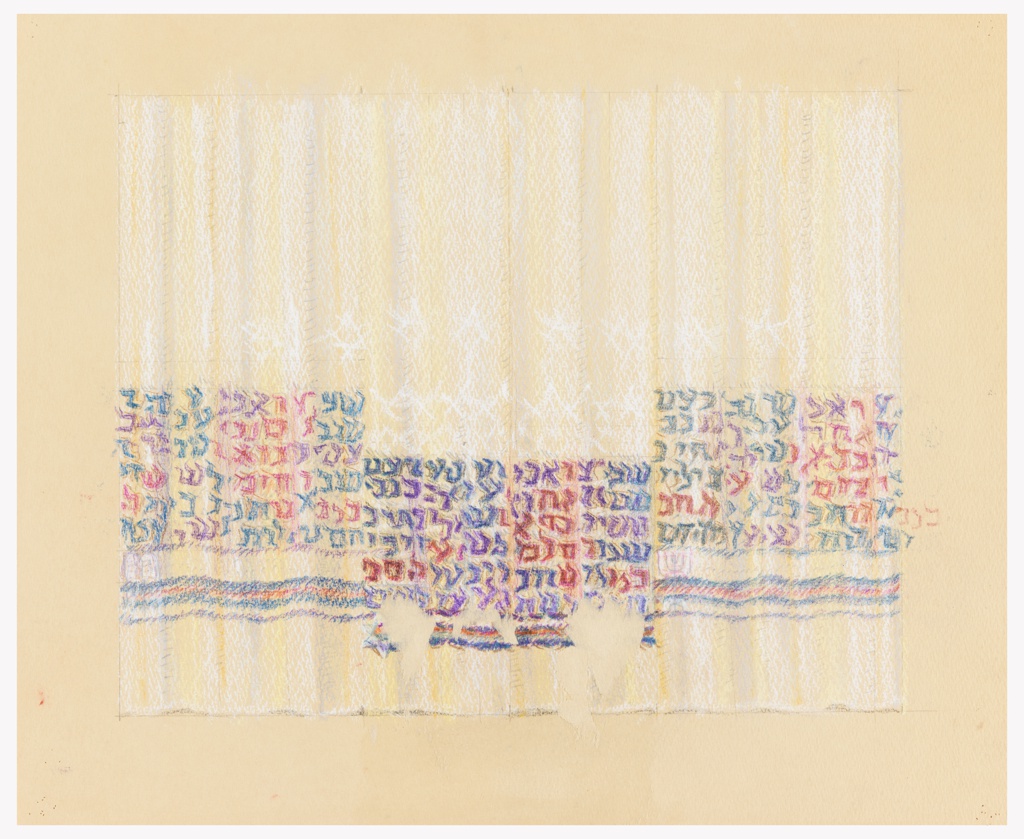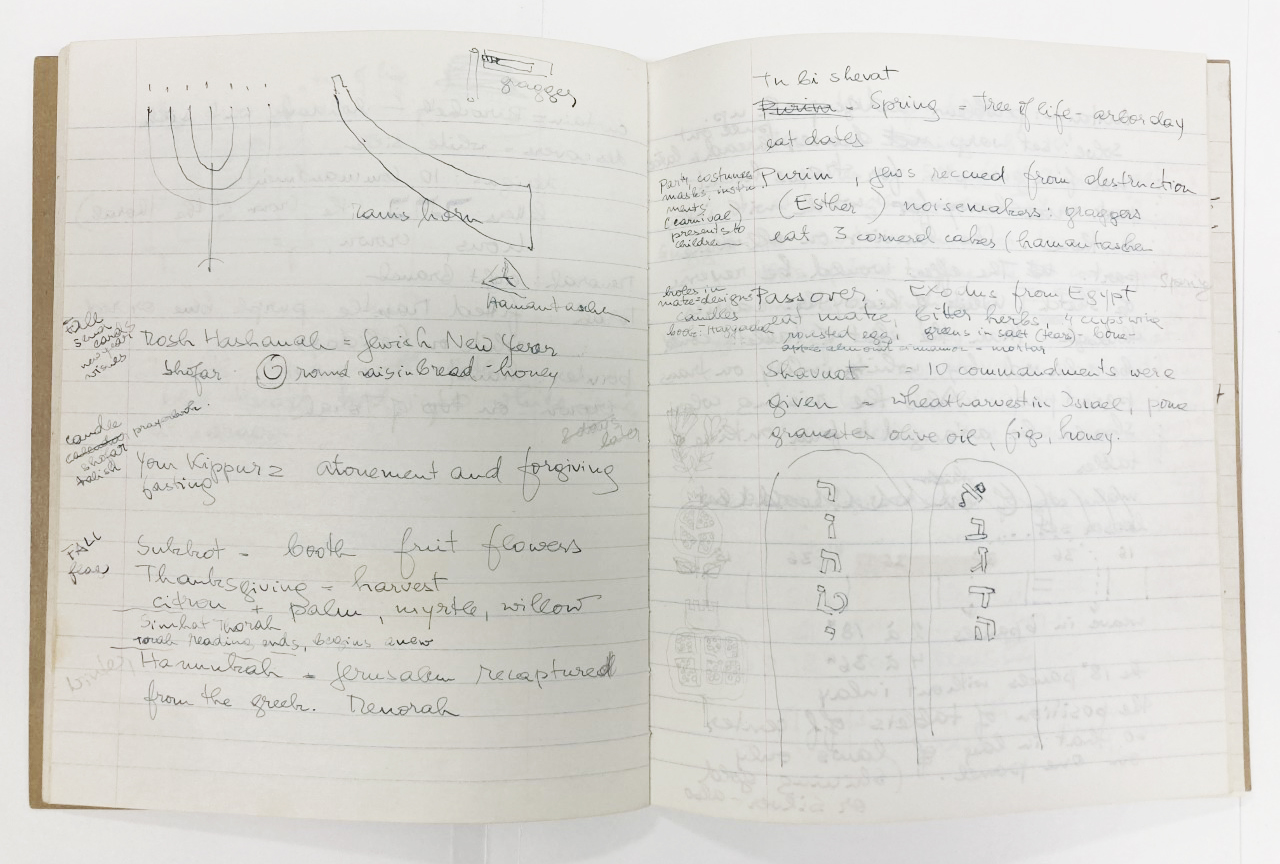
Drawing, Design for an Ark Curtain, Beth Am Synagogue, Los Altos, California; Designed by Trude Guermonprez (American, born Germany, 1910–1976); Crayon, graphite, brush and silver paint, beige gouache on tan paper; H x W: 35.6 × 43 cm (14 in. × 16 15/16 in.); Gift of Mr. Eric and Mrs. Sylvia Elsesser, The Trude Guermonprez Archives, 1993-121-71
Over the course of her career, Trude Guermonprez’s work evolved from its original Bauhaus focus on functionality to more intimate, personal images of her own life and the exploration of transcendental themes. Dating from Guermonprez’s later career in the United States from 1933 to 1976, the textiles, documents, and drawings donated to Cooper Hewitt by the designer’s stepson Eric Elsesser and his wife Sylvia include a design for a religious textile used to cover the Torah ark in Jewish synagogues. This drawing for an ark curtain, or parochet, designed and executed for Beth Am Synagogue in Los Altos, California, reflects Guermonprez’s turn from industrial production to an interest in narrative that characterized the end of her career.
Educated at the Municipal School of Halle, Germany, Guermonprez received a typical Bauhaus education in the unified approach of Walter Gropius, whose vision of design as streamlined, functional, and mass producible contributed to the birth of modernism in Europe during the interwar period. After working in Holland during World War II, Guremonprez emigrated to the United States in 1947 where she taught weaving at Black Mountain College in Asheville, North Carolina, alongside Bauhaus luminary Anni Albers. Two years later, she founded the Pond Farm workshop with her school colleague Marguerite Wildenhaim in Guerneville, California. Guermonprez would combine her own weaving practice with teaching, first at the California School of Fine Arts in San Francisco and, from 1954, at the California College of Arts and Crafts in Oakland.
Like many of her contemporaries associated with the California craft art movement, Guermonprez’s work from the 1950s and early 1960s experimented with color, texture, and fiber to create sculptural fine art textiles. By the mid-1960s, her interests turned from technological innovation to narrative, drawing from her own life to produce textiles that were more akin to paintings—deeply personal, poetic, and quiet reflections of the human experience. Exploring the relationship between warp and weft, the ark curtain design illustrates polychrome Hebrew text woven onto a translucent ground. Guermonprez’s incorporation of text into the weave structure was highly original, and reflects the designer’s departure from the Bauhaus principles of abstraction. [1] By weaving a legible narrative into the textile, Guermonprez provides a vehicle for the congregant to frame their transcendental experience, extending the design beyond its basic function as a covering for the Torah ark.

Process Notebook, from the Trude Guermonprez Archives
Among the notebooks included in the Elsseser gift include an example of Guermonprez developing various decorative themes around the Jewish high holidays, including sketches of pomegranate motifs and Hebrew text set within an entablature for Shavuot, which celebrates the revelation of the Torah at Mt. Sinai and the Israeli harvest. The designer’s work dealing with her own life and her relationship to her faith, expressed through these three site-specific projects for California synagogues, extend the modernist philosophy beyond mere function and reproducibility. Adopting a transcendental approach to design in her later years, Guermonprez employs color, form, and decoration to articulate enduringly humanistic narratives.
Notes & Sources
[1] Kay Sekimachi, “The Weaver’s Weaver: Explorations in Multiple Layers and Three-Dimensional Fiber Art,” interview by Harriet Nathan (Berkley, CA: Bancroft Library, Regional Oral Histories Office, 1996).
Trude Guermonprez Archive, Cooper Hewitt, Smithsonian Design Museum